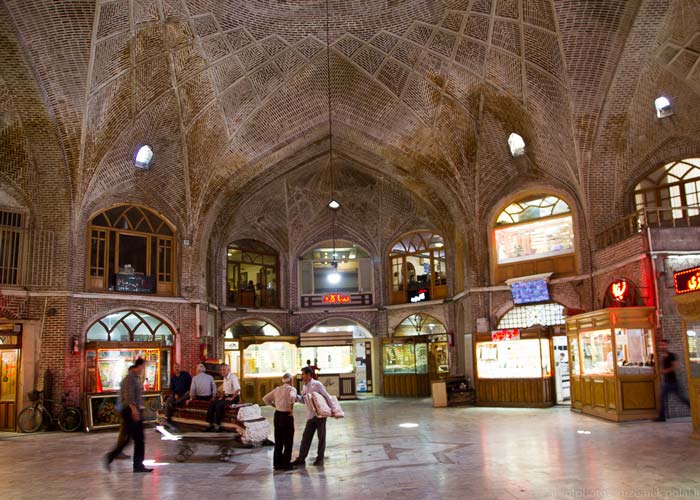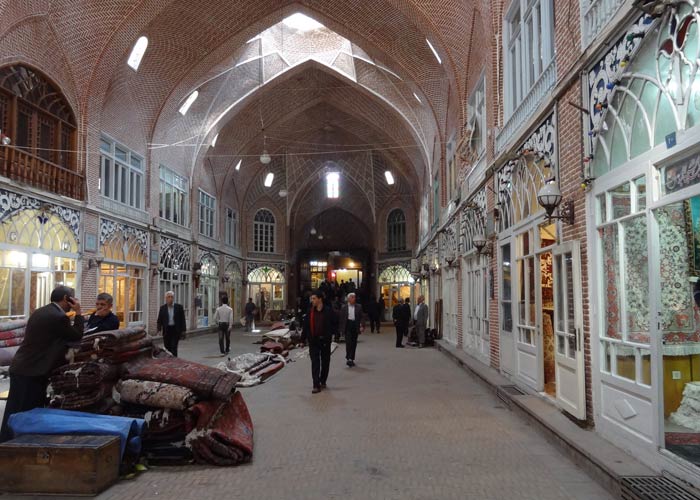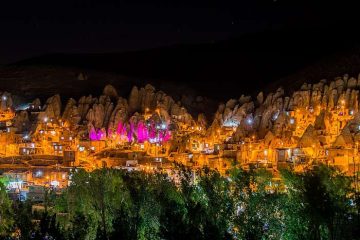Tabriz Bazaar; Roofed Labyrinthine Market
Tabriz Bazaar is a historical market in the heart of the city of Tabriz. Tabriz historic Bazaar Complex is one of the oldest markets in the Middle East, and the largest roofed Bazaar in the world and a major trade center on the Silk Road. Tabriz Grand Bazaar was added to the UNESCO World Heritage sites of Iran in 2010, making it the top monument among Tabriz attractions.
is your best chance to get familiar with the local culture of one of the most authentic cities of Iran. By visiting Tabriz Grand Bazaar, you can buy any kind of Persian souvenir you have ever wished for. Tabriz Bazaar UNESCO world heritage site is one of the major attractions of the city. Tabriz Bazaar history along with the Tabriz Bazaar architecture are what make Tabriz historic bazaar complex worth a visit.
As an Iranian tour operator, we invite you to have a look at our Iran tours, as well:
>> Iran Tours 2020 & 2021 (Click Here)

photo by @lonebiker.net on Flickr
One of the greatest joys of travelling is to get to know the local culture of the destination. One can simply do that by walking down on a local market, or on a bigger scale, a local bazaar. Now imagine that this local bazaar has been recognized as an international trade hub since many years ago. This is Tabriz Bazaar we are talking about; attracting various kinds of people from all over the world such as noblemen, merchants, travelers, etc.
John Chardin* is one of these people. On one of his visits to Tabriz Grand Bazaar he describes it as “… and as many shops in their market-places, among which are three hundred inns, and some so large, as to lodge three hundred people, and many cabarets for coffee, tobacco, and strong liquors. There are three hundred and fifty mosques, three hospitals, which relieve the poor with victuals twice a day…” (Sir John Chardin’s Travels in Persia, 2011 Ed.)
* John Chardin was the son of a wealthy merchant, jeweler of the Place Dauphine. He journeyed to Persia (that is how Iran was called) early in 1666. Shah Abbas II made Chardin his agent for the purchase of jewels in the same year.
#1 Why Call It Tabriz GRAND Bazaar?
Why Call it Tabriz Grand Bazaar? To know the magnificence of Tabriz Grand Bazaar, here are some noteworthy key features of it:
- One of the oldest bazaars in the middle east
- Largest covered bazaar in the world
- Tabriz Bazaar UNESCO world heritage site since 2010
- One of the most paramount commercial hubs when the Silk Road was The Silk Road

photo by @Fabian-Scholz on Flickr
#2 Tabriz Bazaar History
Tabriz Bazaar History : Here is a brief listing of Tabriz Bazaar historical highlights:
- The Tabriz Bazaar history dates back to 8th century CE when its construction began.
- Mentioned by Marco Polo while he was passing through the Silk Road
- Most prosperous during 13th century; the time when Tabriz became the capital of Safavid Dynasty
- Played an important and crucial role during the Iranian Constitutional Revolution and the Islamic Revolution
- Ceremonies held in the Tabriz Grand Bazaar:
- The religious ceremony of Ashura Day (and the holy 10 days before this day in which the merchants cease all the commerce and trading for the religious rituals)
- Nowruz ceremonies (Iranian New Year)
- Celebrating the end of Ramadan Holy Month by performing the Fetr Holiday Prayer
- The Historical Hermitages Organization of Iran began a restoration project of the Bazaar in 2000 in which the shop owners actively participated
- 2010 can be considered an important year in Tabriz Bazaar history, since it was the year that Tabriz Bazaar UNESCO registered.

photo by @przemek-polakiewicz on Flickr
#3 Tabriz Bazaar UNESCO World Heritage
Why is Tabriz Bazaar UNESCO World Heritage Site? This question might pop up in your mind that why is Tabriz Bazaar UNESCO world heritage site?
These are only a few of the answers to that question:
- Tabriz Bazaar can vouch for being one of the most complete socio-cultural and commercial complexes among its fellow bazaars
- Exceptional integration of social, economic, political, and religious complex with an exclusive architectural structures, functions, professions, and people from different cultures
- As a prototype for Persian urban planning, the layout of its fabric combined with the highly diversified architectural buildings and spaces reflects the everlasting role of the Tabriz Bazaar.

Tabriz Historical Bazaar Complex Conservation Zone by UNESCO
#4 Tabriz Bazaar Architecture
Tabriz Bazaar Architecture : Nowadays, within Tabriz Bazaar architecture, there are almost :
- 6500 Hojrehs (Chambers),
- 40 business types,
- 20 Rastehs (the main passageways with shops of the same guilds),
- 35 Saras (each functions as a caravansary, but the goods there are samples and small items),
- 25 Timchehs (large and small, enclosed areas in which heavy-weighed and expensive goods are sold; roofs are usually decorated),
- 11 Dalans (corridors that connects passageways in a straight or non-straight way).

photo by @Malcolm-Williams
You can enjoy a memorable excursion through the nearly 51 km2 Tabriz historic bazaar complex. Each hall belongs to a unique profession:
- The Mozaffareih, the most mesmerizing Rasteh, is for the carpet sellers
- The Amir Bazaar specializes in gold and jewelry
- The Kolahdozan Bazaar sells traditional Azeri hats made of wool.
- Other paths include quarters for quality leather goods, handcrafted copper products, irresistible spices, and the freshest fruits and vegetables.
- Be sharp! The original calculator, the abacus, which some shopkeepers still use to calculate the total price (and to keep their mind sharp) is worth spotting on some shop counters.

photo by @shiva1o8
#5 What Makes Tabriz Historic Bazaar Complex Unique?
What Makes Tabriz Historic Bazaar Complex Unique? Earlier we mentioned that Tabriz historic bazaar complex could vouch for being one of the most complete socio-cultural and commercial complexes among its fellow bazaars.
What exactly do we mean by this?
To put it simple, it means that people and travelers were able to address all their human needs within the barriers of the bazaar such as:
- Mosques
- Schools
- Caravanserais
- Bathhouses
- Shops
- Teashops and restaurants
- …
Each of these places intensifies the Tabriz Bazaar architecture.

photo by @Andrea-Moroni on Flickr



1 Comment
Sarah · July 7, 2019 at 12:20 pm
The market can easily take half a day to visit, as it is really vast. Definitely a must visit in Tabriz. Great place for souvenirs especially the carpet!